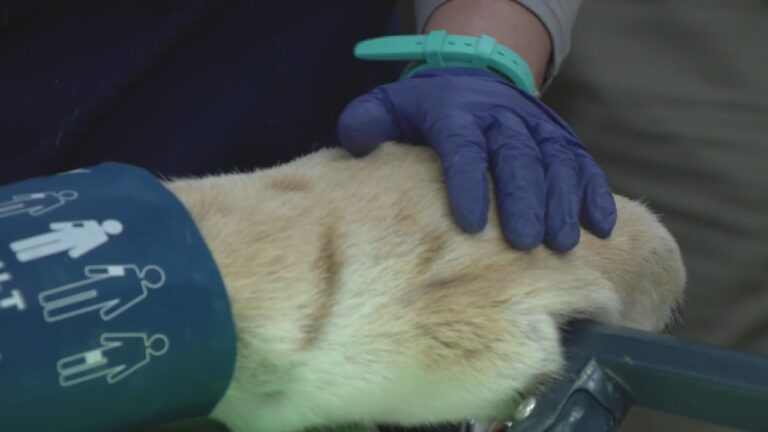BROOKFIELD, Ill. — While it may sound like a folk tale, the tale of the toothy tiger almost came to life in Brookfield this week.
Just like Androcles, who pulled the thorn out of the lion’s foot, the veterinarians and animal care specialists at the Brookfield Zoo took extra care when “Whirl,” a 16-year-old female tiger, needed some dental work.
Experts at the zoo noticed that Whirl needed help during a routine examination and tried to find the root of the problem.
“She had her routine checkup a few weeks ago, and during that checkup, we noticed she had a broken canine that needed root canal treatment,” said Dr. Sathya Chinandurai, of the Brookfield Zoo. “So as soon as we saw that we knew we had to call a dentist.”
Zoo experts then called in the help of Dr. Stephen Juriga, from the Veterinary Dental Clinic.
“Our job is to just focus on the oral cavity, doing a full dental oral exam, and we’ll evaluate those teeth to determine if they need treatment,” Juriga said.
Whirl was brought in for a full exam, and the vets were able to take an in-depth look using a CT scanner, which allowed them to take x-rays of her entire body. It’s something that few zoos around the world can easily tap into.
“Brookfield Zoo is one of the few zoos in the entire world that has an on-site CT scanner,” Chinandurai said.
The scanner allowed them to check every nook and cranny.
“Cats have 30 teeth, we have 30 chances to find something, and we just don’t want to miss anything,” Juriga said.
But the big cat scanner wasn’t the only thing keeping keen eyes on the Whirl. Highly trained teams made sure she was properly cared for throughout the process.
“We are staffed with trained veterinarians as well as veterinary anesthesiologists who will bring the patient to us under anesthesia. They will be intubated, monitored and supported throughout the process,” Juriga said.
According to Juriga, a root canal was in order because they wanted Whirl to be able to return to her normal routines.
“We perform root canal treatment on these teeth to preserve the tooth for function and therefore clean the canal, eliminate the infection, seal the canal so they can continue to use the tooth,” Juriga said.
Once he was under anesthesia, the team worked quickly.
“We were able to plan the entire procedure in advance before he was put under anesthesia to help make this procedure very quick and efficient,” Chinnadurai said.
According to Chinnadurai, Whirl’s teething problems could mean a lot of discomfort in the wild.
“In the wild conditions like this it could lead to infection or, you know, further illness, possibly pain while eating and potentially limit her ability to hunt and eat on her own,” Chinnadurai said.
But thanks to the zoo’s trained and caring team, Whirl will soon be back on her regular schedule.
“We maintain a level and standard of care that is on par with any veterinary hospital and most, many human hospitals,” Chinnadurai said.


